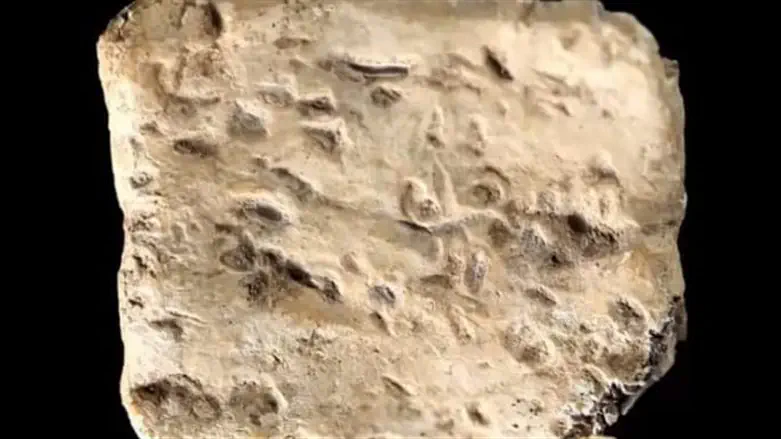
A group of archaeologists said Thursday that an amulet discovered in Samaria is the oldest example of Hebrew script ever found, pre-dating previous finds by centuries.
On Thursday, a team of archaeologists from the Associates for Biblical Research – a self-described Christian apologetics ministry – announced their findings from research done on a small lead tablet recovered during excavations at Mount Eival near the city of Shechem (Nablus) in December 2019.
The researchers said the tiny, two-by-two centimeter tablet was likely an amulet or ‘curse tablet’, directing divine wrath on an enemy.
Archaeologist Dr. Scott Stripling, provost at The Bible Seminary in Katy, Texas and excavation director for the ABR, held the press conference Thursday to discuss the work that he and other researchers undertook on the tablet.
Stripling said that six outside experts were brought in collaborate on the research, including four scientists from the Czech Republic’s Academy of Sciences, including Ivana Kumpova, Jaroslav Valach, Daniel Vavrik, and Michal Vopalensky; and two epigraphers, Prof. Gershon Galil of Haifa University and Pieter Gert van der Veen of the Johannes Gutenberg-Universität Mainz.
The scientists employed advanced tomographic scans to recover the hidden text. In collaboration with Stripling, Galil and van der Veen deciphered the proto-alphabetic inscription.
According to Stripling, the amulet contains 40 letters, and reads: “Cursed, cursed, cursed, cursed by the God” – followed by the Hebrew name for God.
“You will die cursed. Cursed you will surely die. Cursed by [God’s name] – cursed, cursed, cursed.”
The ABR noted that the curse amulet was found on the mountain which was identified in Deuteronomy and the Book of Joshua as the site of the Biblical curses proclaimed by the Levites after the Israelites crossed the Jordan.
The researchers claimed that the tablet dates back to roughly 1,200 BCE, which would make it several centuries older than the oldest previously uncovered sample of Hebrew.
“These types of amulets are well known in the Hellenistic and Roman periods,” said Stripling, “but Zertal’s excavated pottery dated to the Iron Age I and Late Bronze Age, so logically the tablet derived from one of these earlier periods. Even so, our discovery of a Late Bronze Age inscription stunned me.”
Prof. Galil said he immediately recognized the formulaic literary structure of the inscription.
“From the symmetry, I could tell that it was written as a chiastic parallelism.” Reading the concealed letters proved tedious, according to van der Veen, “but each day we recovered new letters and words written in a very ancient script.”
